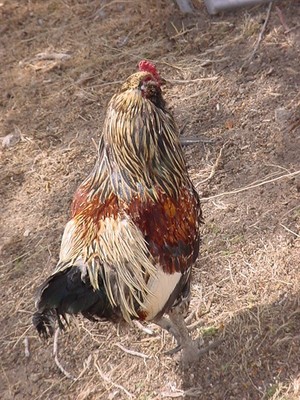Chickens can be a wonderful addition to any small farm or rural homestead. They can be raised for meat, eggs, or both. Chickens will also provide you with some free entertainment, keep down the local bug population, and eat your weeds.
In my opinion, the best way to get your first chickens is to find someone who has some young hens they want to get rid of. Many people do in the spring because they buy enough chicks to insure that they have enough mature chickens for their flock, while allowing for some losses. By getting some adult hens you can gain some experience in owning chickens without having to deal with raising the chicks and the possibility of getting a bunch of roosters you didn’t want right off the bat. It’s always best to spend some time with your first group of adult chickens and then decide if you want to raise chicks.
If you decide that raising chickens is for you, then you can either purchase your chicks at a local feed store or order them online from either Ideal Hatchery or McMurray Hatchery.
The best time to buy chicks is in the early spring. If you order them online they will be shipped via the USPS. (Our local postal people just love chicken time of year, not…) The pullets, or baby hens, will be shipped with some roosters. It’s inevitable that we end up with one or two per every ten or so hens that we order.
Once you get your chicks they will need to be kept under a heat lamp and inside for about their first four weeks of life. We generally keep ours in a big cardboard appliance box with some pine shavings in it. After the chicks have feathers then they can be put outside in their chicken coop and will do fine as long as it is not too cold. The hatcheries can be a great resource in letting you know what variety of birds will do well in your particular climate. If your local feed store orders birds then those are generally the ones that do well in your area.
Raising chicks can be difficult because they like to have a set temperature, clean water, clean food supply, are not happy to be picked up, and will die if squeezed even the slightest bit. While the chicks look cute and cuddly, it’s best to not let kids handle them because they will likely squeeze them and they will die. It takes a day or two but a chick that has been handled will generally die.
Chicks eat ground corn, called scratch, and a chick starter feed. Adult chickens for meat eat a diet meant to bulk them up because they need to be processed at about 16 weeks of age. Chickens for eggs generally eat a layer food with some oyster shells in it for egg shell production. Also, all chickens will happily eat any weeds, bugs and just about anything left over from your kitchen as well. They particularly love veggies and breads. What you feed ultimately is determined by whether or not your chickens are cooped all day or if you free-range them.
Your chickens need a warm, dry place to roost at night. A simple shack with some PVC pipes to roost on works really well. It keeps them off the ground and allows them to stay dry and warm. If you put a light in the coop they will lay eggs all year round and will also thank you for the extra bit of heat if you live in a cold climate.
We free-range our chickens and they are really fun to hand-feed and watch run around after bugs and each other. Chickens each have a unique personality and like to spend time around people. We currently have 10 hens and 2 roosters. You can have multiple roosters if you free-range and if they get along with each other. Generally it’s preferred to only have one if you only have a few hens. We are fortunate that Roo One and Roo Two get along with each other. You do not need a rooster to get eggs, but they manage the hens and guard them so they are nice to have. They also serve as a nice natural alarm clock.
Reference:
- McMurray Hatchery: www.mcmurrayhatchery.com/ Ideal Hatchery: www.ideal-poultry.com/
